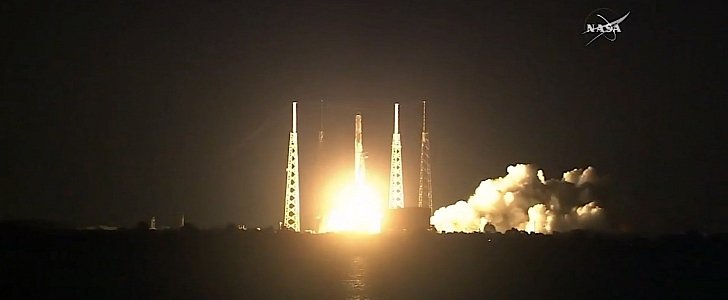The 15th International Space Station resupply mission SpaceX has conducted for NASA departed without a hitch on Friday morning.
The mission, officially called CRS-15, marks yet another flight for the repeatedly flown Falcon 9 booster that in April carried the Transiting Exoplanet Survey Satellite into orbit. This time, it carried another Dragon capsule filled with supplies for the crew and new experiments for the scientists.
Among these experiments is an Earth science instrument called the ECOsystem Spaceborne Thermal Radiometer Experiment on Space Station (ECOSTRESS), meant to measure how plants respond to changes in water availability in space.
The Dragon capsule which carried them all will spend a month in orbit. When it returns to Earth in August, it will be carrying 3,800 pounds of research, hardware and crew supplies.
Most importantly, Friday’s launch marked the last flight for the current generation boosters. Known as Block 4 boosters, this generation will soon be replaced with the Block 5.
The first incarnation of the new Falcon 9 Block 5 already flew in May carrying the Bangabandhu, Bangladesh’s first communications satellite.
It is part of the Full Thrust variant of the Falcon 9, a family of rockets which feature improved landing legs and grid fins, several structural improvements and weighs less than its predecessors. It is also the final version of the Falcon 9 booster.
The new rocket also has a redesigned helium pressurant tanks. Such a tank was the cause of a Falcon 9 rocket explosion at Cape Canaveral 2016.
The first Block 5 static fire tests took place this February. According to the specs, it should be able to be reused ten times without having to undergo serious repairs.
With it, SpaceX plans to usher a new era for space exploration and rocket launches. The goal is to make the boosters capable of making two successful launches in a single day, significantly increasing the number of missions that can be done for various entities.
Among these experiments is an Earth science instrument called the ECOsystem Spaceborne Thermal Radiometer Experiment on Space Station (ECOSTRESS), meant to measure how plants respond to changes in water availability in space.
The Dragon capsule which carried them all will spend a month in orbit. When it returns to Earth in August, it will be carrying 3,800 pounds of research, hardware and crew supplies.
Most importantly, Friday’s launch marked the last flight for the current generation boosters. Known as Block 4 boosters, this generation will soon be replaced with the Block 5.
The first incarnation of the new Falcon 9 Block 5 already flew in May carrying the Bangabandhu, Bangladesh’s first communications satellite.
It is part of the Full Thrust variant of the Falcon 9, a family of rockets which feature improved landing legs and grid fins, several structural improvements and weighs less than its predecessors. It is also the final version of the Falcon 9 booster.
The new rocket also has a redesigned helium pressurant tanks. Such a tank was the cause of a Falcon 9 rocket explosion at Cape Canaveral 2016.
The first Block 5 static fire tests took place this February. According to the specs, it should be able to be reused ten times without having to undergo serious repairs.
With it, SpaceX plans to usher a new era for space exploration and rocket launches. The goal is to make the boosters capable of making two successful launches in a single day, significantly increasing the number of missions that can be done for various entities.




